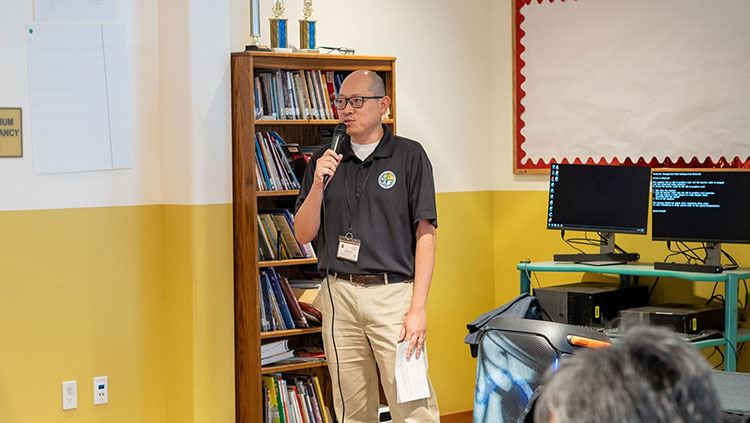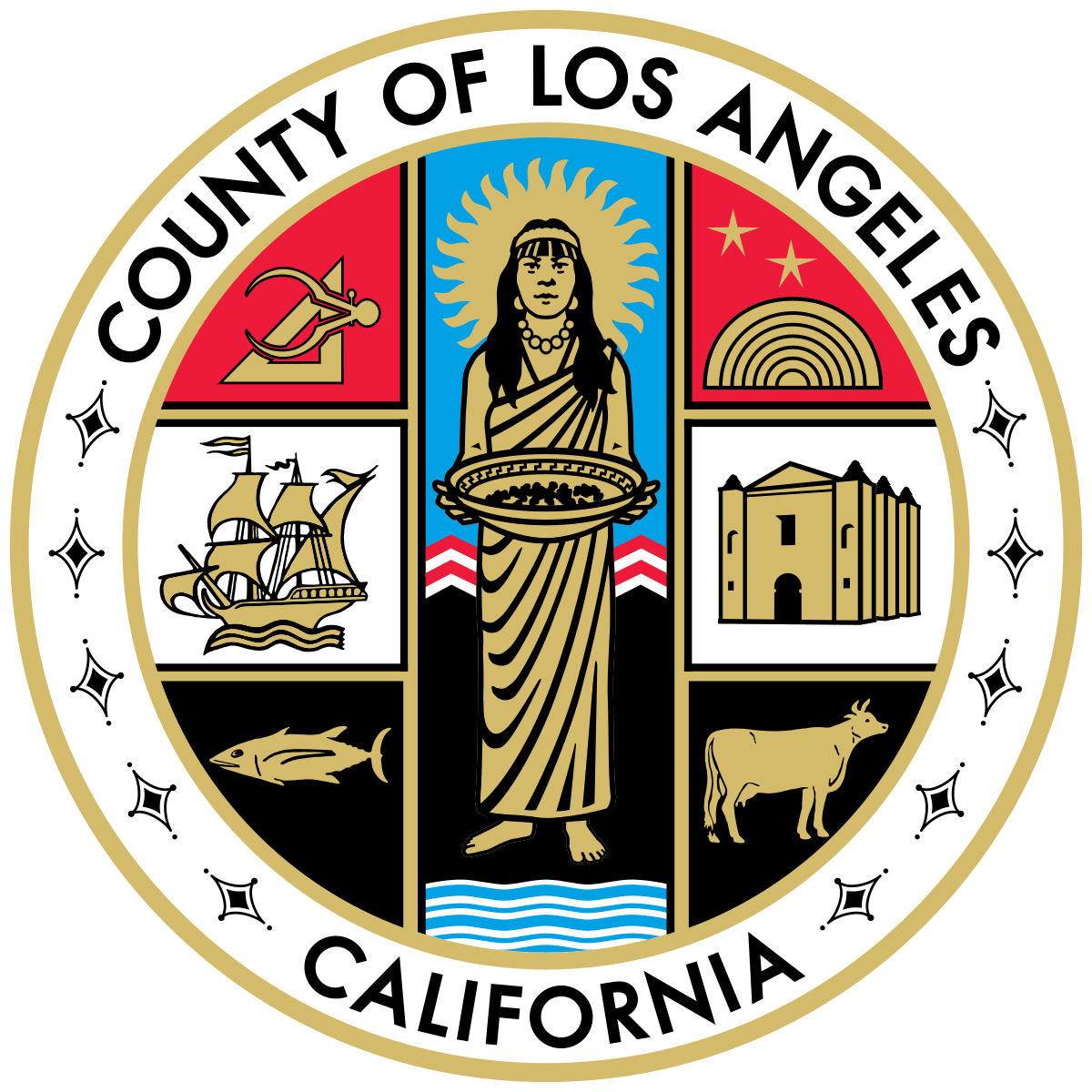Rooted in Service
By Clement Lau, DPPD, FAICP
Rooted in Service: An Asian American Reflection on Parks and Recreation
This May, I celebrate 22 years of service with the County of Los Angeles — a milestone that feels especially meaningful during Asian American and Pacific Islander (AAPI) Heritage Month. It has prompted me to reflect on what it has meant to build a career in public service as an Asian American: a journey shaped by quiet perseverance, cultural values, and lived experience. Over the years, I have come to better understand how identity, place, and purpose intersect — not only in how I see the world, but in how I approach my work in community planning, parks and recreation, and sustainability.
A Quiet Presence
Asian Americans are often described as the "quiet minority" — hardworking but underrepresented, present but often overlooked. In the public sector, I have felt that invisibility at times. Early in my career, I rarely saw Asian Americans in leadership roles, in community engagement efforts, or in the narratives about who public spaces were meant to serve.
And yet, like many others, I quietly did the work. I believed and continue to believe deeply in the power of parks and recreation to transform and improve communities, particularly in areas where green space is lacking. Over the years, I have worked on impactful projects like the Los Angeles Countywide Parks Needs Assessment (PNA), Parks Needs Assessment Plus (PNA+), and the Community Parks and Recreation Plans, striving to ensure that all neighborhoods — especially historically under-resourced ones — have access to quality parks, recreation, and nature.
In these efforts, I often thought about the values instilled by my upbringing in Hong Kong — perseverance, humility, and a deep sense of duty to the greater good. Both of my parents were civil servants, and they modeled what it meant to serve the public faithfully and selflessly. I like to think that, in my own way, I am continuing their legacy of dedicated public service through my work today. Their example taught me that even quiet, behind-the-scenes efforts can have a profound and lasting impact.
The Importance of Representation
Representation matters — especially in fields like parks and planning, where decisions affect the daily lives of diverse communities but leadership has not always reflected that diversity. Public spaces are meant for everyone, but when the people shaping them do not mirror the communities they serve, the result can be blind spots: cultural nuances overlooked, community voices unheard, and needs unmet.
Growing up in Hong Kong, I developed a deep appreciation for nature even amidst a dense urban environment. Parks were cherished community spaces — places for morning walks and exercise, family gatherings, and quiet reflection. After moving to the United States as a teenager, I was struck by how access to green space and recreational facilities varied widely between neighborhoods. This early experience helped plant the seeds for my commitment to equity and inclusion.
Today, I recognize the importance of making sure others see themselves reflected — not only in the parks and open spaces themselves, but in the professionals planning, designing, managing, and advocating for them. It is about ensuring that Asian American and Pacific Islander communities, along with all historically marginalized groups, are seen, heard, and engaged. It is also about mentoring the next generation, helping young people realize that they, too, can have a place in shaping the future of public spaces.
I am encouraged to see growing visibility and cultural inclusion in the parks and recreation field. In recent years, the L.A. County Department of Parks and Recreation (DPR) has celebrated Lunar New Year with public events at parks and gardens, bringing Asian traditions into shared civic spaces in meaningful ways. I am also heartened and inspired by the active engagement of community-based organizations like Active San Gabriel Valley (ActiveSGV), Asian Pacific Islander Forward Movement (APIFM), and Nature for All, which include passionate Asian American staff working at the intersection of environmental justice, public health, and equitable access to parks and open space. These developments remind me that progress is possible, and that representation is not only about who is at the table, but also about how our cultures and communities are acknowledged and celebrated.

Connecting to Land and Legacy
In my work, I often think about legacy — what we leave behind for future generations. In many Asian cultures, there is a strong emphasis on honoring ancestors and thinking generationally. That mindset, reinforced by my family's tradition of public service, has profoundly influenced how I approach sustainability and community-building. It is not just about what we build today, but about how those decisions ripple forward — shaping the health, identity, and well-being of the communities that come after us. This long-term perspective reminds me to plan with care, humility, and an eye toward intergenerational impact.
Public spaces are not just patches of green on a map. They are living legacies, places that hold memory, culture, and connection. They are spaces where healing can and does happen, particularly in communities that have experienced disinvestment or environmental harm or burden. In my career, I have had the privilege of working on efforts to transform degraded lands into thriving valuable community assets, including the master plans for Earvin “Magic” Johnson Recreation Area and Puente Hills Regional Park. This work is a reminder that healing and regenerating land is also about restoring communities. It is about creating places where future generations can thrive. It is sacred work — and it resonates deeply with my cultural values and sense of public duty.
Navigating Challenges, Embracing Opportunity
Being an Asian American in this field has not been without its challenges. There have been moments of isolation, times when I felt like an outsider, and instances where I had to gently but firmly advocate for broader definitions of community and inclusion. Sometimes, assumptions based purely on appearance created barriers as well. More than once, people meeting me for the first time assumed I must work in information technology (IT) or engineering — fields that Asian Americans are often stereotyped into — rather than seeing me as someone whose work centers around planning and advocating for parks, equity, and environmental stewardship.
While such assumptions can be frustrating, they have also strengthened my commitment to broadening the image of who can lead and innovate in this work. Every project, every conversation, every opportunity to advocate for nature, access, and justice has been a quiet way to expand those expectations — to show that our contributions, experiences, and passions are not confined by stereotypes. Through it all, I have learned that the greatest impact often comes not from the loudest voice, but from the consistent, faithful work of building trust, planning collaboratively and thoughtfully, and keeping equity at the center.
Looking Ahead
Today, my work continues to evolve. I am now involved in efforts to expand community forestry and tree canopies through the implementation of L.A. County’s first ever Community Forest Management Plan. I am also helping to advance just transition strategies that support communities and workers being impacted by the move away from fossil fuels, and help to restore and reimagine land occupied by oil and gas infrastructure. These initiatives are not separate from the values that brought me into the field of parks and recreation; they are an extension of them. Whether planting trees, remediating and reusing land, or advocating for a more equitable future, the goal remains the same: to create healthier, more inclusive communities for generations to come.
As we celebrate AAPI Heritage Month, I hope to see more stories shared about the contributions of Asian Americans in the community planning, parks and recreation, and sustainability fields. I hope we continue to expand the narrative about who belongs — and who leads — in this work. My journey — from a child growing up in Hong Kong, to the son of civil servants who modeled public service, to an advocate for parks and open space and sustainability — is not only about personal achievement. It is about being part of something larger. It is about honoring the generations that came before, serving the communities of today, and laying a foundation of hope, resilience, and connection for those yet to come.
Clement Lau, DPPD, FAICP, is a Senior Analyst with the Los Angeles County Chief Sustainability Office. He was previously a Departmental Facilities Planner with the County’s Department of Parks and Recreation.
